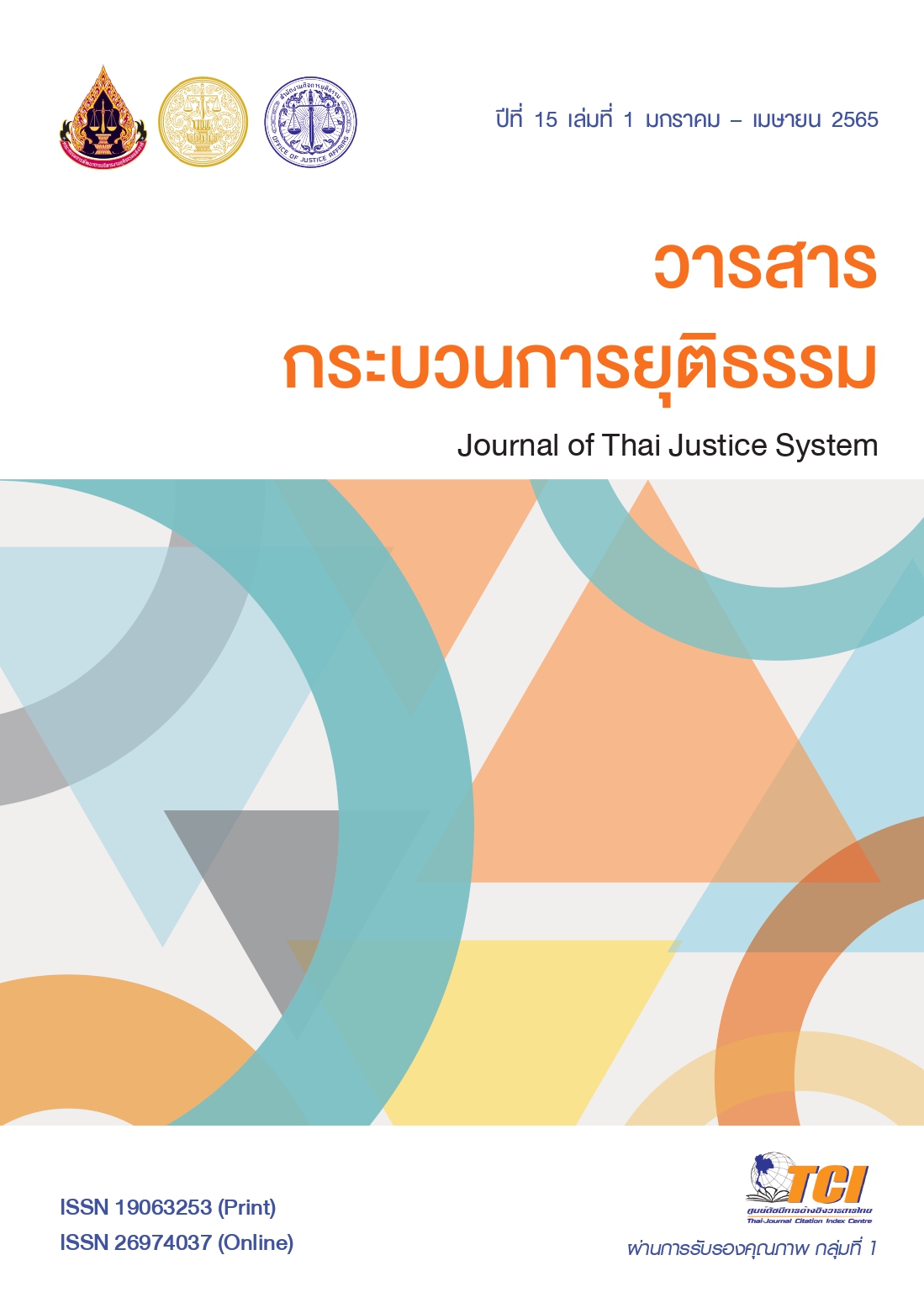Legal measures to protect historical city of Ayutthaya and cultural heritage management
Main Article Content
Abstract
This article aims to study the concepts and theory of development, the essence of Convention Concerning the Protection of the World Cultural and Natural Heritage A.D. 1972, the development of Ayutthaya Historical Park to be a World Heritage Site "Historic City of Ayutthaya", and law enforcement to protect Historic City of Ayutthaya. This is also to propose legal measures that are effective and consistent with the current social context of Phra Nakhon Si Ayutthaya province and support future trends.
From this study, it was found that the important legal system and mechanism for protecting and managing Historic City of Ayutthaya has not been established. This is because many relevant laws are involved to protect the city without integration as well as lack of legal unity. In addition, there are no legal measures to encourage people, communities and local administrative organizations for a concrete participation in cultural heritage protection. Therefore, solutions for the heritage protection for the city were proposed as follows: 1) the amendment to the Act on Ancient Monuments, Antiques, Objects of Art and National Museums, B.E. 2504 to allow the Ministry of Culture as the main agency for cultural heritage protection and the local government organization as the responsible agency for area cultural heritage under the supervision of the Fine Arts Department; 2) the increase in participation of people and local government organizations based on the mentioned Act, especially the cultural heritage protection planning and the encouragement of cultural heritage knowledge and value among people in the community.
Article Details

This work is licensed under a Creative Commons Attribution-NonCommercial-NoDerivatives 4.0 International License.
Published Manuscripts are the copyright of the Journal of the Justice System. However; the opinions that appeared in the content are the sole responsibility of the author.
References
กฎกระทรวงฉบับที่ 53. (2542). ราชกิจจานุเบกษา, 116(58ก), 1-8.
กรมศิลปากร. (2561). อุทยานประวัติศาสตร์พระนครศรีอยุธยา. ค้นเมื่อ 4 เมษายน 2564, จาก http://virtualhistoricalpark. finearts.go.th/ayutthaya/index.php/th/
เกศินี จุฑาวิจิตร. (2542). การสื่อสารเพื่อการพัฒนาท้องถิ่น (พิมพ์ครั้งที่ 2). นครปฐม: สถาบันราชภัฏนครปฐม.
ณัฐพล ขันธไชย. (2527). แนวความคิดและทฤษฎีในการพัฒนาประเทศและการพัฒนาชนบท. ใน การบริหารงานพัฒนาชุมชน. กรุงเทพฯ: โอเดียนสโตร์.
ปกรณ์ ปรียากร. (2538). ทฤษฎีและแนวคิดเกี่ยวกับการพัฒนาในการบริหารการพัฒนา. กรุงเทพฯ: สามเจริญพานิช.
ประกาศกรมศิลปากร เรื่อง กำหนดเขตที่ดินโบราณสถาน. (2519). ราชกิจจานุเบกษา, 93(102), 1249-1250.
ประกาศกรมศิลปากร เรื่อง กำหนดเขตที่ดินโบราณสถานเพิ่มเติม. (2540). ราชกิจจานุเบกษา, 114(6ง), 40.
ยุวัฒน์ วุฒิเมธี. (2534). การพัฒนาชุมชน: จากทฤษฎีสู่การปฏิบัติ. กรุงเทพฯ: บางกอกบล็อก.
วราลักษณ์ คงอ้วน. (2559). การวางแผนและการบริหารจัดการสิ่งแวดล้อมเมือง. กรุงเทพฯ: สำนักพิมพ์มหาวิทยาลัยธรรมศาสตร์.
วิภาวี พิจิตบันดาล. (2548). “การเคลื่อนย้ายประชากรกับการลงทุนในทุนมนุษย์.” ใน เอกสารการสอนชุดวิชาเศรษฐศาสตร์กับทรัพยากรมนุษย์ หน่วยที่ 6. นนทบุรี: มหาวิทยาลัยสุโขทัยธรรมาธิราช.
สนธยา พลศรี. (2547). ทฤษฎีและหลักการพัฒนาชุมชน (พิมพ์ครั้งที่ 5). กรุงเทพฯ: โอเดียนสโตร์.
สำนักงานนโยบายและแผนทรัพยากรธรรมชาติและสิ่งแวดล้อม. (2561). คู่มือการนำเสนอแหล่งมรดกทางวัฒนธรรมและแหล่งมรดกทางธรรมชาติเป็นแหล่งมรดกโลก. กรุงเทพฯ: อี.ที.พับลิชชิ่ง.
สำนักงานราชบัณฑิตยสภา. (2554). พจนานุกรม ฉบับบัณฑิตยสถาน พ.ศ. 2554. (2554). ค้นเมื่อ 4 เมษายน 2564, จาก https://dictionary.orst.go.th/
สุรัตนา อินทรกุล. (2561). มาตรการทางกฎหมายเกี่ยวกับการบริหารจัดการมรดกโลกทางวัฒนธรรมในประเทศไทย. วิทยานิพนธ์นิติศาสตรมหาบัณฑิต. มหาวิทยาลัยธุรกิจบัณฑิตย์.
UNESCO. (1992). Historic city of Ayutthaya. Retrieved April 4, 2021, from http://whc .unesco.org/en/list/576/


